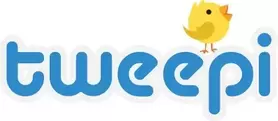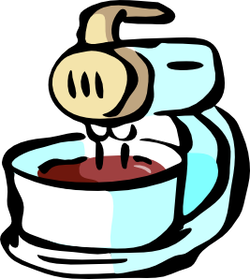|
Continuing our re-run of popular marketing blogs first posted in February 2021  Strategy – it’s a big scary word used by clever people who earn lots of money. No it isn’t. Strategy isn’t that complicated, at least not as a concept. Really, all it means is knowing what result you want and working out a way to achieve that result using the resources you have available to you and then knowing when you have achieved your result. We already know what result you want – you want to sell your book. "social media, which is a resource you can use for free" This weekly blog is discussing the ways that you can achieve that result using social media, which is a resource you can use for free (or, at least, quite cheaply). And you will know if you achieve your results if your book sales increase. Actually, there are some other things you can measure along the way to tell if you if you are heading in the right direction, but we’ll cover them later.  You can write your whole social media marketing strategy in five bullet points or less. Here’s ours:
As you can see, it isn’t exactly rocket science. There are other layers of actions below those five, but as someone once asked – how do you eat an elephant? The answer is: one bit at a time (apologies to vegans and wildlife preservation activists – but it’s only a metaphor). "each audience is unique," Last week we looked at identifying the target audience for your book(s), but that only takes your strategy to the first bullet point. Because each audience is unique, we have to engage with them in unique ways. This is why blasting out generic Tweets doesn’t work. You need to understand the “organic reach” of your social media marketing channels to get the best out of them. Let’s take Young Adult (YA) fiction as an example.  YA fiction is aimed at readers in the 12 to 18 age group. They are social media savvy and they are usually on the latest and trendiest social media platforms. If your idea of social media is Facebook, then you are onto a loser with the YA audience. Only 51% of teenagers who use social media use Facebook, the second smallest group after the over 65s. Even Twitter is a bit old hat for them, taken over by oldies who only want to argue about politics. "Even Twitter is a bit old hat for them" But there is more to it than that. YA readers have to go to school and they aren’t allowed to use their phones or other devices during school hours, except for schoolwork. The best time to engage with YA readers is going to be during the evening, typically between 7 and 10 pm. But that’s when you are sitting down with a mug of cocoa, watching Corrie and Midsomer Murders (TV programmes may vary by nationality). When we talk about the organics of social media, we are really talking about the way your messages “grow” and get noticed. It’s like applying fertiliser to a plant. Put it down at the right time and in the right place and the plant will flourish. But put it down at the wrong time and the rain will wash it away and the plant will wither and die and if you put it in the wrong place it won’t get to the roots of the plant, with the same result.  YA is a good example of this, because young people love sharing things on social media – far more so than their elders. So hit the YA audience with the right message at the right time and it won’t just reach the ones who follow you, it will be shared with all their friends as well. And then their friends will share it and so on and so forth. If you do it right, you may even “go viral” and your message will be seen by millions of YA readers around the world. But on the other hand, the YA audience is the most challenging to reach because they respond best to visual images – particularly video. That’s why Tik-Tok is currently the fastest growing social media platform on the planet. But how do you get a message out about your books on Tik-Tok? We’re not going to answer that question - yet.  The first plant you have to nurture and grow is your own social media presence. If you are an author using Twitter and you have only 100 followers – you haven’t got a social media presence. Until your followers number in the thousands, probably tens of thousands, your social media presence isn’t going to help you at all. This is when people get tempted to buy “followers”. Well, it’s your money and if you want to waste it, that’s your privilege. Because most paid for followers aren’t real people, they are bot (robot) accounts. They only exist as a username. And bots don’t buy books. "If you are an author using Twitter and you have only 100 followers – you haven’t got a social media presence." The cleverest of these bots re-Tweet other people’s Tweets, just so they can appear more human. Strangely, people actually follow some of these bot accounts, including other bots, so you have bots following bots. Crazy, isn’t it? You know those bios that say “Follow me and I’ll follow you back”? How do you know you aren’t following a bot? A lot of bot accounts are used to bombard people with advertising. OK, I know that sounds hypocritical when we’re blogging about social media marketing, but at least we’re real people (honestly – we are!).  There is an app called Tweepi which will help you to gain followers over time. It’s a bit of a blunt instrument, based on the idea that if you follow a lot of people, some of them will follow you back. You have to pay to use some of their features, but you can also get a free account with a limited range of features, which is enough to get you started. At the end of this blog you'll find a guide written by someone who has used Tweepi to gain thousands of followers, so please feel free to download it. If you are prepared to spend twenty minutes a day on Tweepi you can probably add about a hundred new followers a week to your Twitter account. The real secret, however, is to attract more followers because of the stuff you post on social media. This is your “engagement strategy”. Let’s say that when you identified your audience characteristics (the homework we set last week), you thought that many of your audience would probably be dog lovers. So, if you Tweet lots of things about dogs, anyone who likes dogs is going to be interested in reading your Tweets.  Not only will they read your Tweets, but they may re-Tweet (RT) the best ones. That will bring you more followers. But, more importantly, if your Tweets get lots of “likes”, they are more likely to appear at the top of peoples’ Twitter feeds, which makes them more likely to be seen. That’s how social media algorithms (horrible technical term) work these days. If your Tweets are the first ones that are seen, they are more likely to be read and they are more likely to be RT’d and because of the number of likes, they are more likely to bring you new followers. That’s organic growth in a nutshell (groan at bad pun). If you are good at it, you will soon have more followers than people you follow yourself – just like Katie Perry or Steven Fry.  The whole point about “social media” is that it is social and that means engaging with other people first, taking an interest in what they have to say. So, the other thing you can do is engage in conversations about other people’s posts. If you are engaged, then other people in the conversation may find what you have to say interesting enough to want to follow you and, of course, you want to follow them. It’s another way of getting organic growth. "The whole point about “social media” is that it is social" You will notice that I haven’t mentioned promoting your books. It’s OK to do that, but Tweet about dogs (or whatever) far more frequently. A ratio of 10:1 is probably about right. You also have to Tweet everyday if you can. People follow accounts if they are obviously active. An account that hasn’t Tweeted for more than a few days is probably a bot account or is engaged in some sort of scam and is just trying to identify new victims. These last few paragraphs have mainly been about Twitter and that is because it is the easiest platform to demonstrate the points we wished to make. But the same basic rules apply to all the other social media platforms: Facebook, Instagram, Pinterest et al: social first, commercial second. It’s a hard lesson to learn if you want quick results, but if you want to be in this for the long haul, it is worth taking the time. And, more importantly, if you want to see your sales growing, you have to be in it for the long haul. That doesn’t suit the generations who are used to “instant gratification”, so they have to learn to be patient. If you have only written the first chapter of your book, or even the first paragraph, then now is the time for you to start engaging with your audience. That way you will already have an engaged audience by the time your book is published. But it’s never too late, so even if your book has been out for years, you can start today. You will probably have worked out by now that this is all very time consuming. Which is why some Indie authors choose to use (small) publishers to do this for them. But not all small publishers are equal, as I explained in a previous blog. The accounts and websites that offer to send out Tweets for you aren’t willing to spend the time to do it right. If you pay for someone to Tweet about your books (probably using a Tweet that you had to compose in the first place), that’s all they’ll do. There will be no attempt to establish any sort of social engagement. OK Selfishgenie Publishing, put your money your money where your mouth is - what are you doing to engage with your audience?  You’re reading this blog, aren’t you? That is part of our engagement strategy. We identified the fact that if you are an Indie author, you are going to be interested in knowing how to market your books. If you are an author then, almost by definition, you are a reader too. So, we’re publishing this series of blogs so that you will engage with us and we can engage with you. You might take a look at our books while you’re here or you might not, but that doesn’t matter. It is the engagement that matters. In previous blogs we have used some of our books as examples of what we were talking about. It comes as no surprise (to us) that our sales for those books went up a little bit after those blogs were posted. I mentioned at the top of this blog that there are some measurements that will help you work out whether your strategy is working or not and social media provides some easy measurements for you to use: Number of followers, number of RTs and number of likes. If those numbers keep going up, then your engagement strategy is working. Some sites offer even more “analytics”, such as where in the world people engaged and your most popular Tweets/posts. You might want to take a look at them to see what they might tell you and what you can learn from them. For us here at Selfishgenie we also measure “number of visits to our website”. When you clicked on the link to get here, you showed up on our metrics (more jargon, it means the way we measure success). Do you read a lot of blogs? Many are part of someone’s engagement strategy. Don’t worry about that though. The important thing is whether or not you find the blog interesting or entertaining.  In terms of the “marketing mix”, engagement on social media falls under two different Ps: Place and Promotion. Place is the “channels” that are used: FB, Twitter et al and Promotion is the messages that you put out to help you engage with people. Next week we’re going to take a more in depth look at blogs and also look at using extracts and teasers to promote your work. We hope you have found this blog entertaining or informative - or both. If you want to be sure not to miss the next edition, just sign up for our newsletter. We'll even send you a free ebook for doing so. Just click the button below.
0 Comments
Leave a Reply. |
AuthorThis blog is compiled and curated by the Selfishgenie publishing team. Archives
March 2025
|
||||||
 RSS Feed
RSS Feed